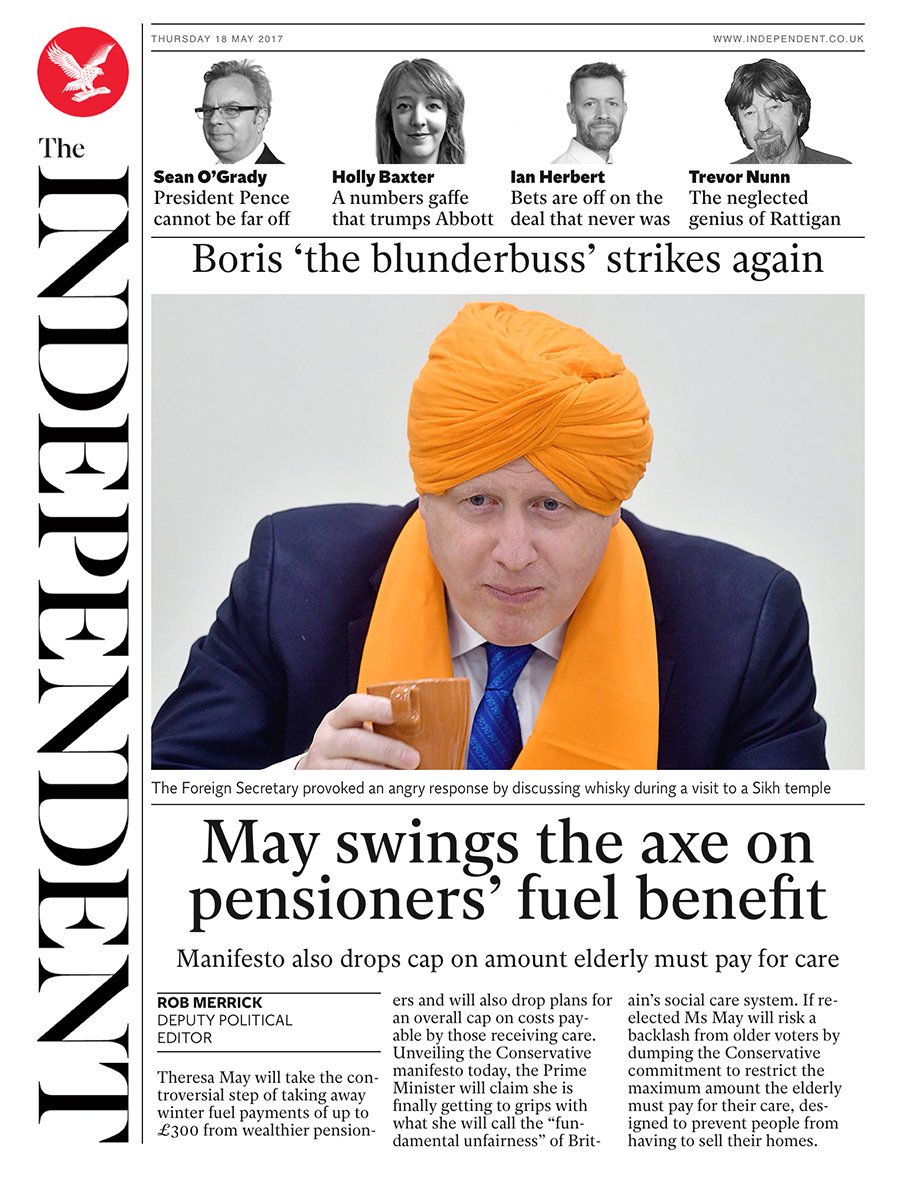This is the first of a series of weekly reports by the Centre for Research in Communication and Culture on national news reporting of the 2017 UK General Election.
The results in this report are derived from detailed content analysis of election coverage produced on the weekdays (i.e. Monday to Friday inclusive) between 5th and 10th May from the following news outlets:
Television: Channel 4 News (7pm), Channel 5 News (6.30pm), BBC1 News at 10, ITV1 News at 10, Sky News 8-8.30pm
Press: The Guardian, The I, The Daily Telegraph, The Times, The Financial Times, The Daily Mail, The Daily Express, The Mirror, The Sun, The Star
We analysed all election news found in the television programmes. For the press, we included election news found on the front page, the first two pages of the domestic news section, the first two pages of any specialist election section and the page containing and facing the papers leader editorials. Our methodology.
In this report we focus on the following features of news coverage during the opening stage of the formal campaign: 1, the visibility or presence of the different political parties and other organizations and individuals in the news; 2, the quotation time given to these individuals and institutions; and, 3, which topics attracted most media attention.
Executive summary
- The Conservatives dominated mainstream news media coverage in the first week of the campaign. They were the most frequently reported party and the most extensively quoted. Their lead in coverage and quotation terms was particularly notable in national press coverage, with their current dominance building upon the considerable advantages they enjoyed in the 2015 General Election.
- The advent of multi-party politics in the UK much discussed in the previous election is currently in abeyance, at least in national media terms. All the minor parties had a reduced presence in the first week of the 2017 campaign, when compared with the same period of the 2015 General Election.
- The dominance of the two main parties was most apparent in press coverage, but it was also evident in TV news coverage. The SNP and UKIP were the parties who lost greatest ground in comparison with their national media exposure in 2015.
- The two main party leaders were the most dominant figures in coverage by a considerable margin. The appearance of Phillip May, the Prime Ministers husband, on the BBC1 entertainment programme, the One Show, in the middle of the week, propelled him to become the 5th most prominent political personality reported in the first weeks coverage.
- Our analysis of the issues confirms the extent that Brexit has dominated the media campaign in this initial period. The next most prominent substantive issues were the economy and business. These represent matters that the Conservative party would prefer to focus upon in their campaigning. Issues that the Labour opposition have sought to prioritise, such as health and education, have thus far been marginalised.
- The side-lining of the nationalist parties seems also to have limited discussion of devolution and related matters.
- Despite the prominence of Brexit, coverage of immigration, which was a touchstone of the 2016 EU Referendum campaign, was comparatively limited in the first week of the campaign.


